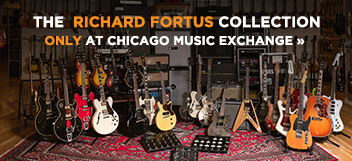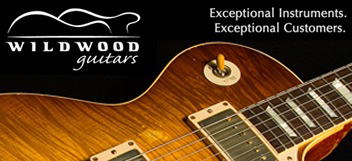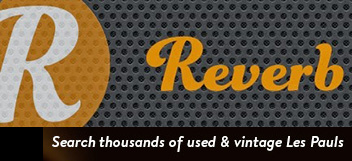You are using an out of date browser. It may not display this or other websites correctly.
You should upgrade or use an alternative browser.
You should upgrade or use an alternative browser.
Rolled finger board edge pictures please
- Thread starter John550
- Start date
garywright
Well-known member
- Joined
- Aug 17, 2002
- Messages
- 15,651
Can't help ya with a fingerboard pix but did you see this one @ Dave's
http://davesguitar.com/products/gibson-custom-shop/2015-true-historic-1959-les-paul-reissue-3/#
:wow
http://davesguitar.com/products/gibson-custom-shop/2015-true-historic-1959-les-paul-reissue-3/#
:wow
sws1
Well-known member
- Joined
- Dec 4, 2001
- Messages
- 2,848
Something about that photo makes me think PRS. Could be the very 'flat' lighting, but the staining of the wood looks almost fake.
renderit
Well-known member
- Joined
- Jan 19, 2009
- Messages
- 10,967
I'll attempt one if I get a chance tomorrow on my 56. I'll warn though, I couldn't get a good shot of a Playboy bunny if I was handed the best camera in the world.
markguitar
Les Paul Forum Member
- Joined
- Nov 27, 2001
- Messages
- 2,375
IMO, not too much to this as the binding is barely rolled. Nothing like the smooth rolled feel of an older Tom Murphy aged guitar. Not a valid new appointment that you should be paying for.
IMO, not too much to this as the binding is barely rolled. Nothing like the smooth rolled feel of an older Tom Murphy aged guitar. Not a valid new appointment that you should be paying for.
Agreed not as good as an old Murphy or even some of the newer in house CC aged that guitars that are wondderful.
renderit
Well-known member
- Joined
- Jan 19, 2009
- Messages
- 10,967
Here's some crap pictures. I think it's rolled nicely. I also think it is a "valid appointment". Whether it is worth the extra money only you can decide.
First picture is the True Historic, a 1956 model. As I said, my photog skills suck so play along with me here. If you look down to the third fret, look at the nib. See how narrow it is. The roll goes pretty much from the neck wood all the way to the fretboard with not much of a flat edge along the binding on the top. You can see the top flat very slightly betwwen 2 and 3 and 3 and 4 actually in towards the fingerboard from the nib! The side of the binding feels very oval. I would call it very rolled on this one at least.

Second picture is "Skidmark", my 2014 R8. Notice the edge at the first fret and the second fret on the top of the binding. It is "relaxed" nicely, but the binding is not rolled. It is almost rectangular and feels that way. It is a very nice neck, but the edges feel new.

Also in the background you can see the Loch Ness Monster and Beano.
First picture is the True Historic, a 1956 model. As I said, my photog skills suck so play along with me here. If you look down to the third fret, look at the nib. See how narrow it is. The roll goes pretty much from the neck wood all the way to the fretboard with not much of a flat edge along the binding on the top. You can see the top flat very slightly betwwen 2 and 3 and 3 and 4 actually in towards the fingerboard from the nib! The side of the binding feels very oval. I would call it very rolled on this one at least.

Second picture is "Skidmark", my 2014 R8. Notice the edge at the first fret and the second fret on the top of the binding. It is "relaxed" nicely, but the binding is not rolled. It is almost rectangular and feels that way. It is a very nice neck, but the edges feel new.

Also in the background you can see the Loch Ness Monster and Beano.
Last edited:
renderit
Well-known member
- Joined
- Jan 19, 2009
- Messages
- 10,967
Added pictures above. Sorry about the photography. I can try again if I can figure out where I put my good camera. Or even my "so-so but better than an iphone" camera, or even my "cheap but still better than an iphone" camera. Till then the iphone is "good enough" for most.
ourmaninthenorth
Well-known member
- Joined
- Mar 28, 2009
- Messages
- 7,124
Here's a couple of shots of a 15 year old Murphy....not really what you're asking for, so don't know how helpful it is...:laugh2:
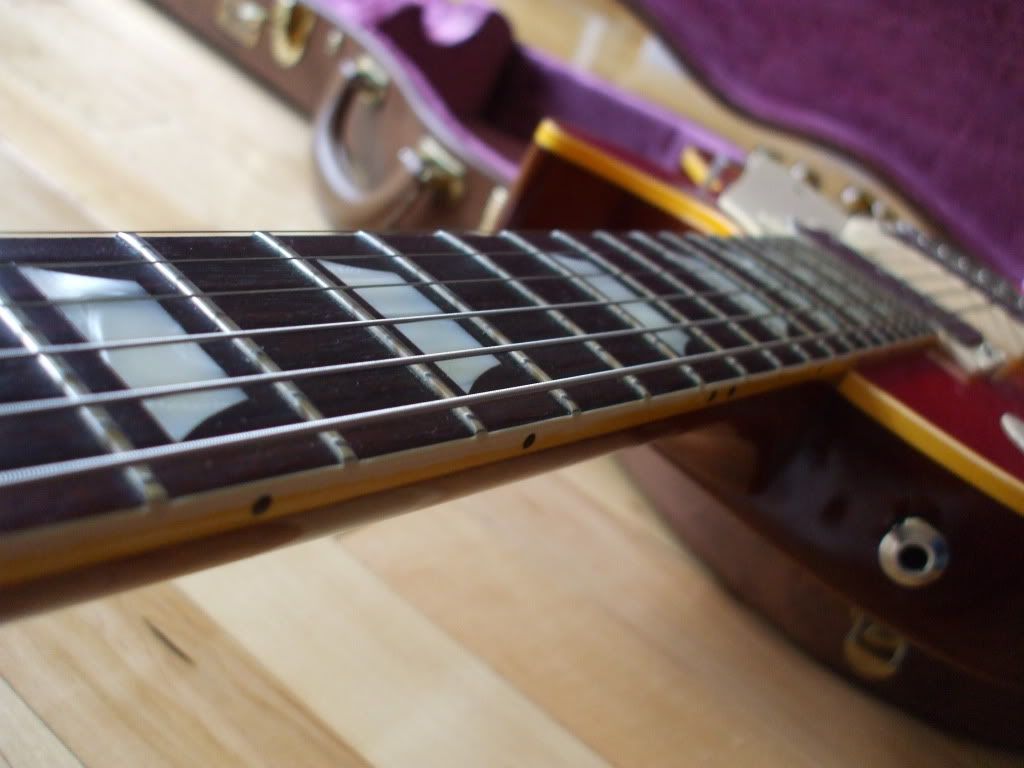
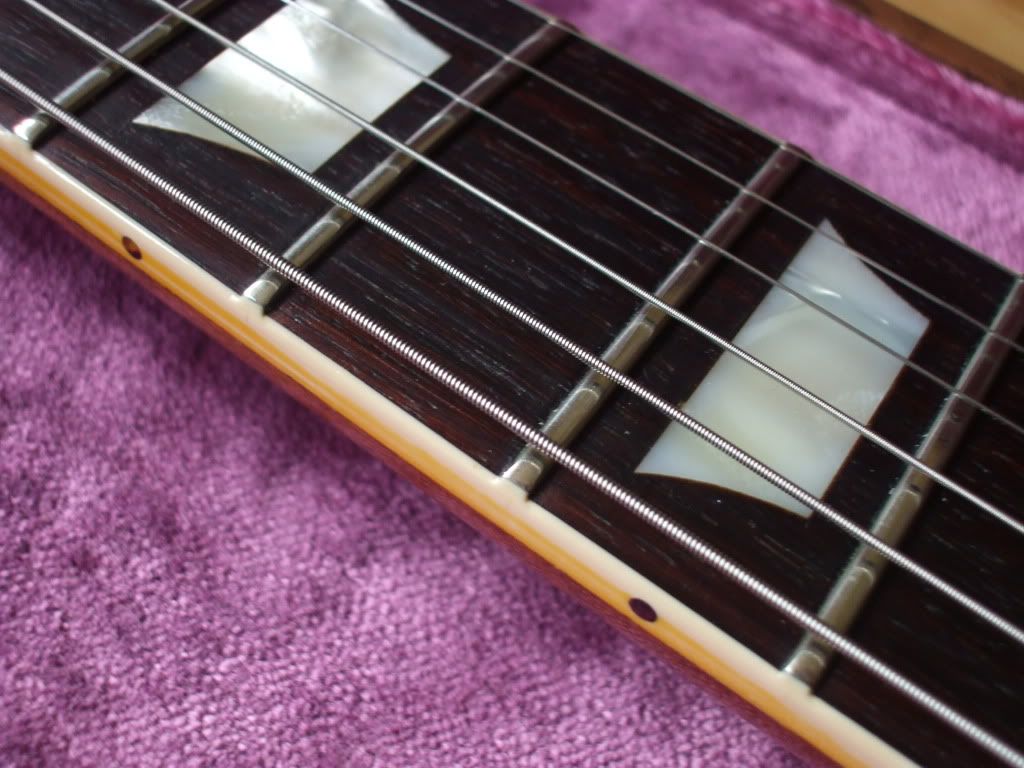
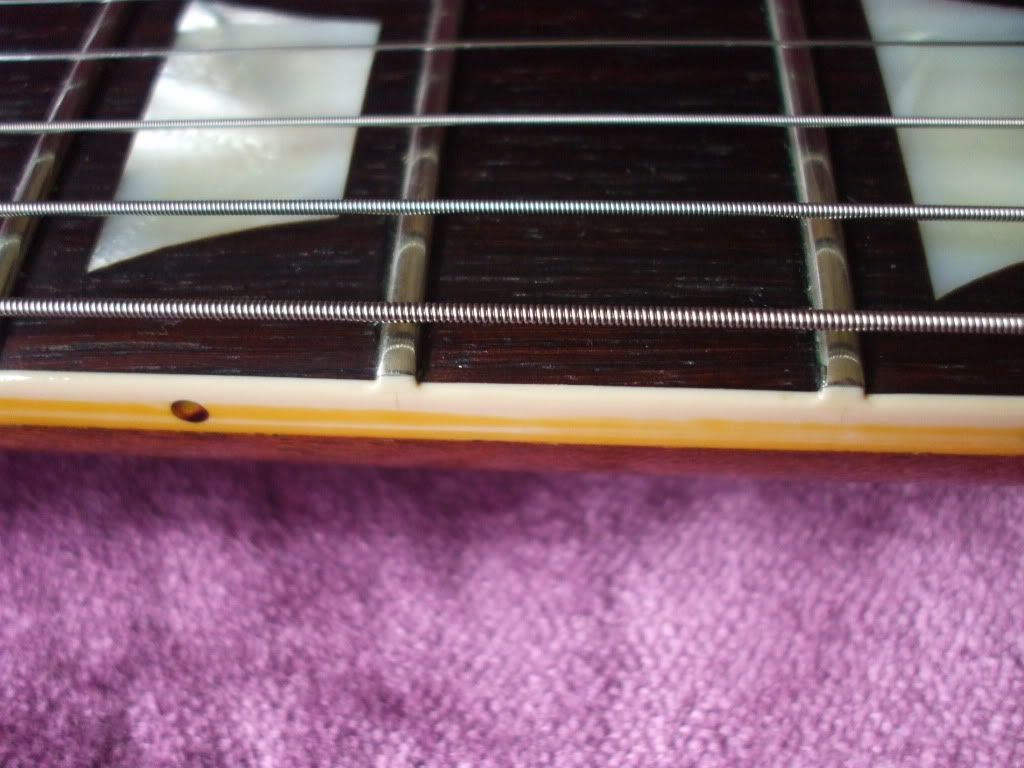



ONEHERO
Member
- Joined
- Apr 5, 2016
- Messages
- 219
Too bad they stopped that process
El Gringo
Well-known member
- Joined
- Apr 8, 2015
- Messages
- 5,666
I think this process continues as when I visited Gibson Custom on 9/4/19, I seen this process in person where a team of workers were hand scrapping the edges of the fingerboards . I was actually quite fascinated watching them in person doing this part of the creation of our cherished Les Paul's . It's one thing hearing all of the comments about this from 2015 when the True Historic series came out , and then it's a whole other world to see this in person which I was quite impressed .
ONEHERO
Member
- Joined
- Apr 5, 2016
- Messages
- 219
I think this process continues as when I visited Gibson Custom on 9/4/19, I seen this process in person where a team of workers were hand scrapping the edges of the fingerboards . I was actually quite fascinated watching them in person doing this part of the creation of our cherished Les Paul's . It's one thing hearing all of the comments about this from 2015 when the True Historic series came out , and then it's a whole other world to see this in person which I was quite impressed .
Interesting
not to be confused between scraping and rolling the fingerboard. Scraping is to remove the extra when binding is almost finished (which all guitars need).
Whereas rolled is done meticulously with a hand-rolled motion between each fret
Look at the pictures above and see how the binding looks from Murphy aging.
ONEHERO
Member
- Joined
- Apr 5, 2016
- Messages
- 219
Even the old 50s had the rolled binding- which again is different than binding scraping
see where the lacker is compared to the side dots
http://www.lilypix.com/photos/data/c51ce410c124a10e0db5e4b97fc2af39/2298_p34109.jpg
see where the lacker is compared to the side dots
http://www.lilypix.com/photos/data/c51ce410c124a10e0db5e4b97fc2af39/2298_p34109.jpg
Here is a dupilcate post from a thread that I started on this topic.
Doug and Pat show the stock binding and fret-dress of an authentic 1960 LP Standard aka "Jayne". As you can see, the 50's/60's era LP's were constructed with a thin rolled-edge binding, finished fret ends, and a slight nib at the base of the fret. What's odd here, is that the 2019 60th Anniversary R0 shows binding/frets that are closer to that of a standard production (non-Historic) LP Standard. I assumed that all post 2016 (definitley 2017) and later models were/are constructed with rolled-edge binding and finished fret ends... apparently, this is not the case.
The 2013 "Murphy Aged" R0 in this clip has binding and frets are closer to the authentic 1960 "Jayne" model. Is razor trimming of the binding shoulders part of the Murphy aging process? I don't think Gibson had gone back to the rolled-edge binding in 2013, so I'll assume this was achieved via razor trimming and/or sanding?
Both my 2016 M2M R7 and 2018 Wildwood R7 have rolled-edge binding and finished fret ends, same as the authentic 1960 model.
Another thing... My 2018 Wildwood R7 shares the same color difference between the pickup rings and the pickguard; same as the authentic 1960 model. Do all True Historic and post 2017 Historic models share the same plastics color variance?
The binding, fret, and plastics comparisons begin at 11:23
Doug and Pat show the stock binding and fret-dress of an authentic 1960 LP Standard aka "Jayne". As you can see, the 50's/60's era LP's were constructed with a thin rolled-edge binding, finished fret ends, and a slight nib at the base of the fret. What's odd here, is that the 2019 60th Anniversary R0 shows binding/frets that are closer to that of a standard production (non-Historic) LP Standard. I assumed that all post 2016 (definitley 2017) and later models were/are constructed with rolled-edge binding and finished fret ends... apparently, this is not the case.
The 2013 "Murphy Aged" R0 in this clip has binding and frets are closer to the authentic 1960 "Jayne" model. Is razor trimming of the binding shoulders part of the Murphy aging process? I don't think Gibson had gone back to the rolled-edge binding in 2013, so I'll assume this was achieved via razor trimming and/or sanding?
Both my 2016 M2M R7 and 2018 Wildwood R7 have rolled-edge binding and finished fret ends, same as the authentic 1960 model.
Another thing... My 2018 Wildwood R7 shares the same color difference between the pickup rings and the pickguard; same as the authentic 1960 model. Do all True Historic and post 2017 Historic models share the same plastics color variance?
The binding, fret, and plastics comparisons begin at 11:23
Per my research: Gibson decreased the width of the fretboard by .08, clipped the fret ends at the edge of the fretboard, adhered .06+ wide binding, and then trimmed the binding to form faux fret ends. i.e. Nibs. The nibs look classy, but I'd rather have the feel of the rolled-edge, and the additional mass of longer frets.
On modern to vintage conversion: Even if the binding is trimmed/formed to simulate a 50's rolled-edge, you still have a fretboard that is narrower than a true 50's spec model. To get is as close to 50's spec as possible, the frets would need to be replaced, and then finished to edge of the binding. I don't like the look of this, as the fret ends lay overtop the wider binding. Just doesn't look right to me. For true 50's spec neck, the entire fretboard, frets, and binding would need to be replaced. Hmm... Interesting project.
Question: When did Gibson make these changes? Norlin era, or before?
On modern to vintage conversion: Even if the binding is trimmed/formed to simulate a 50's rolled-edge, you still have a fretboard that is narrower than a true 50's spec model. To get is as close to 50's spec as possible, the frets would need to be replaced, and then finished to edge of the binding. I don't like the look of this, as the fret ends lay overtop the wider binding. Just doesn't look right to me. For true 50's spec neck, the entire fretboard, frets, and binding would need to be replaced. Hmm... Interesting project.
Question: When did Gibson make these changes? Norlin era, or before?
Last edited:
GotTheSilver
Well-known member
- Joined
- Apr 14, 2007
- Messages
- 2,433
Interesting
not to be confused between scraping and rolling the fingerboard. Scraping is to remove the extra when binding is almost finished (which all guitars need).
Whereas rolled is done meticulously with a hand-rolled motion between each fret
Look at the pictures above and see how the binding looks from Murphy aging.
Rolling is achieved by scraping. There is no "hand-rolled motion" that I am aware of. You simply use the scraper to scrape a curved shape into the binding edge rather than a hard squared edge. This is how I do it when I build guitars. This is what I have seen the Gibson Custom Shop do in videos where they describe rolling the binding.
ONEHERO
Member
- Joined
- Apr 5, 2016
- Messages
- 219
Rolling is achieved by scraping. There is no "hand-rolled motion" that I am aware of. You simply use the scraper to scrape a curved shape into the binding edge rather than a hard squared edge. This is how I do it when I build guitars. This is what I have seen the Gibson Custom Shop do in videos where they describe rolling the binding.
Ok so how do you explain the pictures shown? There’s always scraping involved but then there’s the “filing” to roll it rounder. As mentioned it’s rare to see it anymore as it’s too time consuming. Only a few Murphy aged in the past use to have it or the old original bursts of the 50s
El Gringo
Well-known member
- Joined
- Apr 8, 2015
- Messages
- 5,666
Rolling is achieved by scraping. There is no "hand-rolled motion" that I am aware of. You simply use the scraper to scrape a curved shape into the binding edge rather than a hard squared edge. This is how I do it when I build guitars. This is what I have seen the Gibson Custom Shop do in videos where they describe rolling the binding.
Exactly as I seen it in person on 9/4/19
BINGO! :saludeRolling is achieved by scraping. There is no "hand-rolled motion" that I am aware of. You simply use the scraper to scrape a curved shape into the binding edge rather than a hard squared edge. This is how I do it when I build guitars. This is what I have seen the Gibson Custom Shop do in videos where they describe rolling the binding.
Since these are hand-built guitars, the edge is going to vary one to another. If it's any help, both my 2016 M2M R7 and 2018 WW R7 fretboards measure 2" wide @ 12th fret w/thin rolled-edge binding. My 2000 Deluxe 30th Anniversary fretboard is 1.92" wide @ 12th fret w/thick "nibbed" binding. I'm a rolled-edge convert, for sure! :hank
Last edited:

